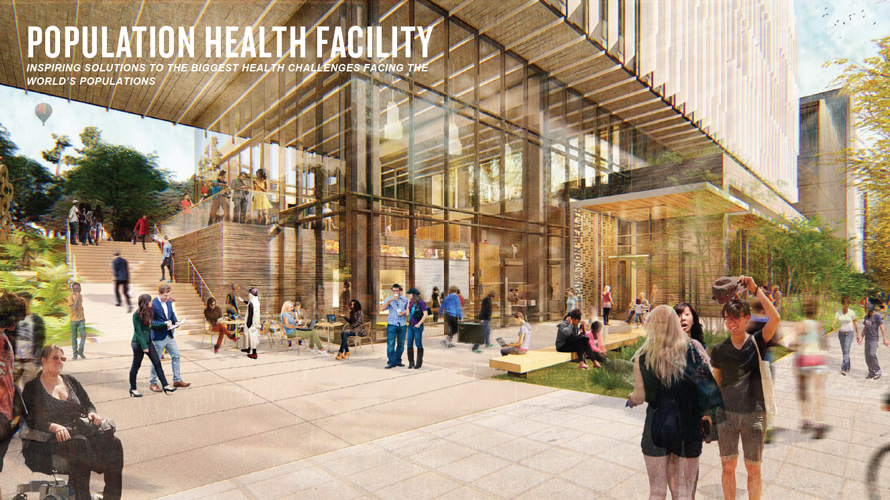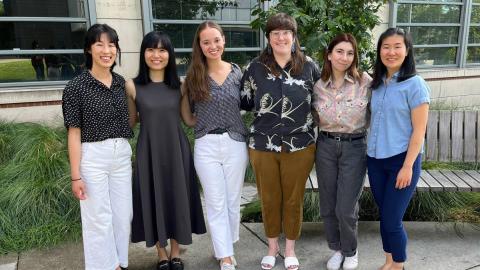The UW Department of Environmental & Occupational Health Sciences (DEOHS) will consolidate into two campus buildings in summer 2020, including the new University of Washington Population Health building now under construction.
The Population Health building is a $230 million project made possible by the Bill & Melinda Gates Foundation. It will serve as the home for the UW’s Population Health Initiative and will house part of DEOHS, as well as the Institute for Health Metrics and Evaluation, the School of Public Health (SPH) and the Department of Global Health.
The move offers an opportunity for DEOHS to consolidate our staff and programs and improve our ability to collaborate and interact with other public health colleagues, said DEOHS Professor Chris Simpson, who serves as department liaison for the new facility.
“DEOHS is core to the activities of the Population Health Initiative,” Simpson said.
“Our department brings expertise in measuring environmental contaminants and stressors, which—together with policy and social science—can identify practical, feasible and effective solutions to population health problems.”
A space for interdisciplinary science
About 40 percent of DEOHS will move to the new facility, located near the UW’s west entrance, Simpson said. The other 60 percent will be housed in the Roosevelt building at 4225 Roosevelt Way in the University District, where DEOHS already has offices and space for the department’s specialized wet labs, with plumbing, ventilation and equipment for hands-on scientific research.
“For researchers moving out of the Magnuson Health Science Building, the laboratory space in Roosevelt is far superior,” he said. “And for faculty and staff moving into the new building, the layout reinforces interdisciplinary science within the department and across SPH departments.”
Designed for collaboration
SPH will bring a majority of its five departments into the new building to create a centralized hub for public health, said Uli Haller, the school’s assistant dean of finance and administration.
The new facility, due to open in summer 2020, is designed with collaborative work spaces and fewer single office spaces, he said.
The ground floor will be student-focused, with classrooms and areas for student interaction. The facility will also have a central stairway to encourage walking and informal opportunities to connect.
Haller said the facility design also maximizes the use of natural light and will feature wellness rooms, gender-neutral bathrooms, changing rooms for people who bike or run to work and kitchens and open eating areas.
The Gates Foundation “had a vision when they made this gift,” Haller said. “They thought a new building would maximize our potential to work together and create synergy between groups.

Creating sustainable health solutions
Simpson said the new building will likely be home to DEOHS administrative staff, teaching faculty and research centers and departments with ongoing, collaborative projects.
Those will likely include the Pacific Northwest Agricultural and Safety Health Center and the Center for One Health Research, both part of DEOHS, as well as other departments in the School of Public Health, such as Biostatistics and Epidemiology.
“One of the challenging aspects of planning our move is trying to predict what our department will look like in two years and beyond,” Simpson said. “We have to consider how to leverage the new space in support of the department’s vision that clean air, clean water, safe food, safe workplaces and sustainable communities are fundamental to improving population health.”
The idea lab
The new Population Health building is designed to be an idea laboratory and collaboration incubator for the Population Health Initiative.
The initiative, launched in 2017, is working to advance human health all over the world and is defined by three pillars: human health, environmental resilience and social and economic equity.




